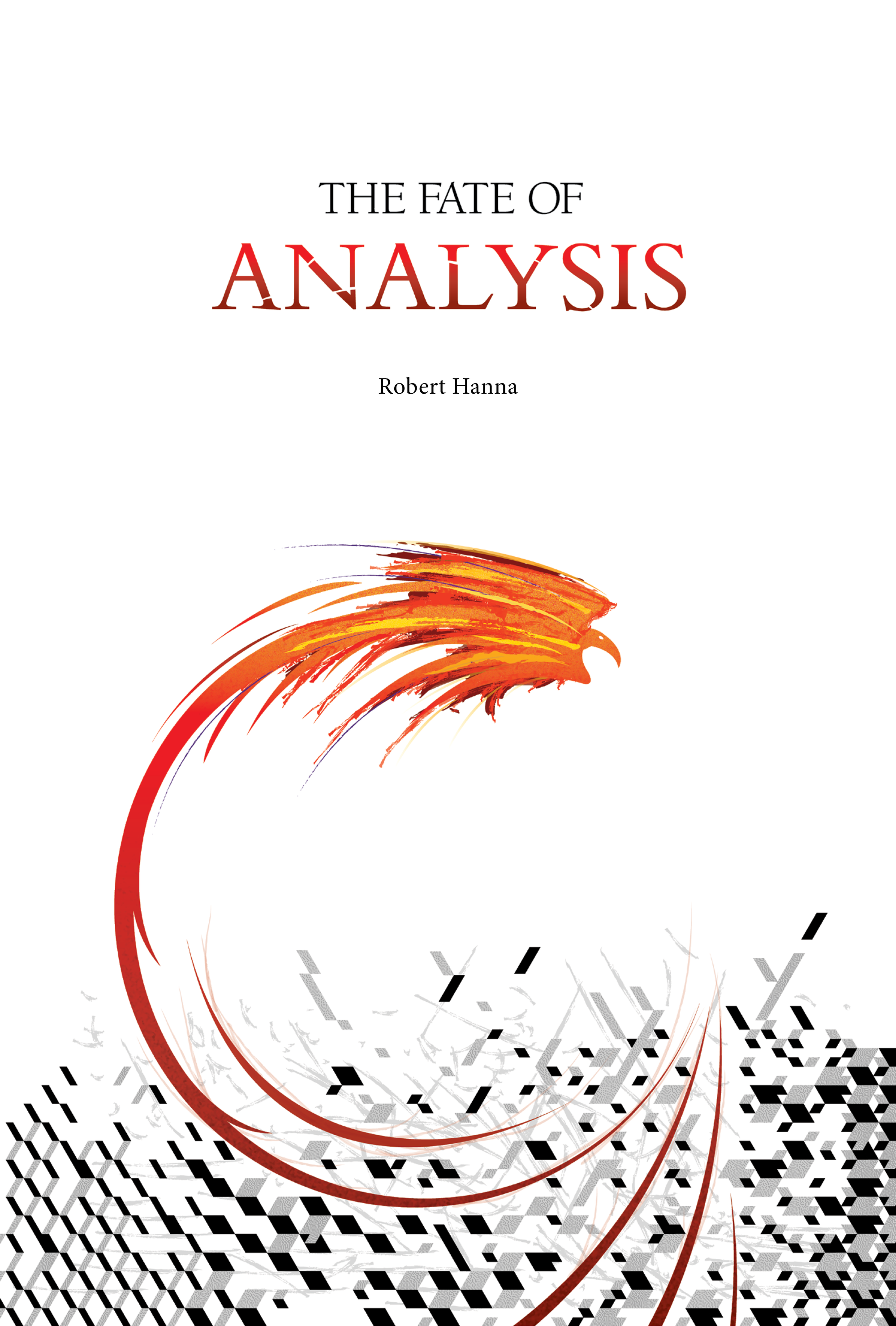MIND: (i) the global dynamic intrinsic structure of a suitably complex living organism, i.e., of an animal, (ii) that’s necessarily and completely embodied in that animal, such that mental and physical properties are essentially complementary to one another in it (aka essential embodiment), (iii) that both activates and also normatively guides that living organism in its spontaneous future-directed activity, and (iv) that’s also necessarily characterized by (iva) immanently reflexive awareness (aka consciousness, aka subjective experience) and (ivb) directedness-to targets of all kinds, whether concrete or abstract, objective or subjective, etc. (aka intentionality, aka cognition).
Controversy: The nature of mind, the nature of the mind-body (aka mental-physical) relation, and the nature of mental causation in a physical world, are among the most fundamental and controversial problems of philosophy; indeed, arguably, they’re even the most fundamental and controversial of these problems, from the pre-Socratics forward, right up to 6am this morning.
Standard classical approaches include (i) Cartesian interactionist substance dualism (minds and bodies are categorically/essentially distinct substances, and mental properties are not only categorically/essentially distinct from physical properties, but also exclusive of and excluded by the presence of physical properties in the same substances, yet nevertheless there are contingent causal relations running between minds and bodies, minds and minds, and bodies and minds), (ii) Spinozistic dual aspect monism, aka neutral monism (mental and physical properties are categorically/essentially distinct aspects of a single underlying neutral substance that’s neither strictly speaking mental nor strictly speaking physical, yet also the metaphysical and ontological ground of both aspects), (iii) materialism, aka physicalism (mental properties are either identical to, logically supervenient on, or naturally/nomologically supervenient on physical properties), (iv) idealism (physical properties are either identical to mental properties, logically supervenient on mental properties, or necessarily in conformity with mental properties), and (v) panpsychism (mental properties are as basic in nature as physical properties, and equally spread throughout nature).
A non-standard classical approach, Aristotelian hylomorphism, says that a mind is the intrinsic activating and guiding form of suitably complex living organismic matter—i.e., of an animal—and that mental and physical properties are essentially complementary to each other in animals.
The definition of mind given at the head of this entry, therefore, is an updated version of Aristotelian hylomorphism, and implies critical rejections of the five standard classical approaches.
ELABORATION
Simply but also synoptically put, the philosophy of mind is philosophical inquiry and theorizing that’s focused on any or all of four basic problems: (i) the mind–body problem: what explains the existence and specific character of conscious, intentional minds like ours in a physical world?, (ii) the problem of mental causation: what explains the causal relevance and causal efficacy of conscious, intentional minds like ours in a physical world?, (iii) the problem of intentional action: what explains the categorical difference between the things we consciously and intentionally do, and the things that just happen to us?, and (iv) the problem of mental representation: what explains our mind’s capacity to represent the world and ourselves, and what is the nature of the mental content of our mental representations?
In view of these problems, for me, the methodology of the philosophy of mind is a systematic triangulation that simultaneously draws on and synthesizes the results of three distinct sub-methods: (i) phenomenology, that is, the first-person introspective descriptions of conscious, intentional human experience, including intersubjective experience, (ii) cognitive or affective neuroscience, that is, the empirical scientific study of cognitive or affective states, acts, and processes in human or non-human animals, and (iii) classical philosophical reasoning about the mind, that is, either conceptual analysis and/or real, substantive metaphysics, directed to exploring the nature of minds like ours.
Needless to say, philosophy of mind in any or all of these senses has a long history, including the pre-Socratics, Plato’s Phaedo, Aristotle’s De Anima, Descartes’s Meditations on First Philosophy, and Spinoza’s Ethics, and it also encompasses a standard array of 20th and 21st century.
I’ll now briefly describe what I take to be the most classical, recent, and contemporary approaches to the philosophy of mind.[1]
Cartesian interactionist substance dualism (René Descartes) holds that the human mind and the human body are categorically/essentially distinct substances, one of them fundamentally non-material/non-physical, and the other one fundamentally material/physical, hence fundamentally non-mental, such that no single substance can have more than one of the two properties as an essential property.
These distinct substances are held together by contingent causal relations, including mind-to-body, mind-to-mind, and body-to-mind relations.
Descartes himself held that God creates and sustains these contingent causal relations, and that the pineal gland is the causal interface between mind and body.
Spinozistic dual-aspect monism/neutral monism holds that mental and physical properties are categorically/essentially distinct aspects of a single underlying neutral substance that’s neither strictly speaking mental nor strictly speaking physical, yet also the metaphysical and ontological ground of both aspects.
Spinoza himself held that the single underlying substance is God, but also greatly complicated and confused this thesis by ambiguously identifying God with nature (deus sive natura).
Recent and contemporary versions of dual-aspect monism/neutral monism typically plump for natura over deus and so are, in effect, versions of materialism/physicalism.
Idealism says that physical properties are either identical to, logically supervenient on, or necessarily in conformity with mental properties.
Subjective idealism (George Berkeley) says that there’s a multiplicity of individual minds that are severally the grounds of all physical properties.
Transcendental idealism (Immanuel Kant) says (i) that necessarily, all the proper objects of rational human cognition are phenomena/appearances, and not noumena/things-in-themselves, (ii) that necessarily, the basic human cognitive capacities don’t conform to either phenomena/appearances or noumena/things-in-themselves, and (iii) that necessarily, the basic structures of phenomena/appearances do conform to the non-empirical structures of the basic human cognitive capacities.
Absolute idealism (G.W.F. Hegel) says that there’s one and only one overarching superhuman rational mega-mind that’s the ground of all physical properties.
And panpsychism says that mental properties are as basic in nature as physical properties, and equally spread throughout nature.
Philosophy of mind in the post-classical Analytic tradition, running from roughly 1950 to 6am this morning, can be doubly characterized by (i) its official, vigorous, and even violent rejections of Cartesian interactionist substance dualism and all versions of idealism, and (ii) its central, ongoing commitment to brain-bounded materialism/physicalism, as regards the nature of the mind-body relation and the nature of cognition.[2]
At the same time, however, even despite its official anti-Cartesianism, this tradition remains implicitly committed to a three-part metaphysical presupposition that I call Cartesian fundamentalism, according to which (i) the mental is fundamentally (that is, inherently, necessarily. and exclusively) non-physical, (ii) the physical is fundamentally (that is, inherently, necessarily, and exclusively) non-mental, and (iii) no substance can have a complementary dual essence that’s inherently and necessarily both mental and physical.
All classical Cartesian interactionist substance dualists and all materialists/physicalists, alike, are committed to Cartesian fundamentalism.
They differ only as to whether, on the one hand, the mental and the physical possess equal but opposite metaphysical and ontological status, which is classical Cartesian interactionist substance dualism, or, on the other hand, the mental asymmetrically metaphysically and ontologically depends on the physical, which is materialism/physicalism.
Hence all materialists/physicalists, at bottom, are Cartesian materialists/physicalists.
Now materialism/physicalism, as such, says that properties of or facts about the human mind are constitutively determined by fundamentally physical facts.
But there are two different types of materialism/physicalism: (i) reductive materialism/physicalism, and (ii) non-reductive materialism/physicalism.
Reductive materialism/physicalism says that all properties of or facts about the human mind are wholly constitutively determined by fundamentally physical properties or facts.
That is: the human mind is nothing over and above the fundamentally physical world.
This is also known as the logical supervenience of the mental on the physical.
Non-reductive materialism or physicalism, by contrast, says that some but not all properties of or facts about the human mind are wholly constitutively determined by fundamentally physical properties or facts.
That is: certain causally inert properties or facts about the human mind—for example, about the normative character of rational intentionality, or about the qualitative specific character of consciousness—vary independently of fundamentally physical properties or facts, even though all of the human mind’s causally efficacious properties or facts are still wholly constitutively determined by fundamentally physical properties or facts.
This is also known as the natural/nomological supervenience of the mental on the physical.
Brain-bounded materialism or physicalism, whether reductive or non-reductive, says that properties or facts about the human mind are constitutively determined by fundamentally physical facts about the human brain.
For example, a very popular mainstream view first articulated in the 1950s, the materialist/physicalist mind-brain identity theory, holds that all mental properties and facts are asymmetrically or “downwardly” identical to, hence “nothing over and above,” brain-properties and brain-facts.
Over the first two decades of the 21st century, philosophy of mind in the post-classical Analytic tradition has also been significantly influenced by the extended mind thesis, which challenges the specifically brain-bounded component of brain-bounded materialism/physicalism.[3]
This thesis says that the fundamentally physical constitutive ground of mental properties or facts extends into the natural and/or social environment beyond the human body, either by means of external vehicles of mental content or by means of external vehicles of consciousness.
That is: the human mind is essentially spread out into the world.
By sharp contrast to philosophy of mind in the post-classical Analytic tradition, however, I reject materialism/physicalism (whether reductive or non-reductive), the brain-bounded mind thesis, and the extended mind thesis, alike.
And at the same time, I also reject classical Cartesian interactionist substance dualism, subjective idealism, absolute idealism, and panpsychism.
More specifically, my double rejection of materialism or physicalism (whether reductive or non-reductive) on the one hand, and classical Cartesian substance dualism on the other, is rationally motivated and entailed by my thoroughgoing rejection of Cartesian fundamentalism.
Hence for me, the mental isn’t fundamentally non-physical; the physical isn’t fundamentally non-mental; and it’s also really possible for a substance to have a complementary dual essence that is inherently and necessarily both mental-and-physical.
Indeed, according to my view, it is actually the case that some substances have a complementary dual essence that’s inherently and necessarily both mental-and-physical, since creatures like us are those very substances.
Very simply put, according to my view, creatures like us are nothing more and nothing less than minded animals.
More specifically, I hold that consciousness is a minded animal’s capacity for subjective experience; self-consciousness is a minded animal’s capacity for becoming and being conscious of the acts, states, and (phenomenal or intentional/representational) contents of her own consciousness, and for forming beliefs or judgments about those acts, states, and contents; intentionality is the directedness of a minded animal’s conscious acts, states, or processes to any sort of target, existing or non-existing, including the minded animal themselves; and mental causation is how a minded animal is able to move their own body, and initiate and/or control her own thinking, as a primitive source of free agency.
Correspondingly, my metaphysics of the mind-body relation is the essential embodiment theory, aka EET.[4]
EET contains six core theses.
-
The Essential Embodiment Thesis: minds like ours—i.e., the conscious, intentional minds of suitably complex living organisms, i.e., of animals—are necessarily and completely neurobiologically embodied.
-
The Essentially Embodied Agency Thesis: Basic acts (for example, raising one’s arm) are intentional body movements caused by an essentially embodied mind’s synchronous trying to make those very movements and its active guidance of them.
-
The Emotive Causation Thesis: Trying and its active guidance, as the cause of basic intentional actions, is primarily a pre-reflective, desire-based emotive mental activity and only derivatively a self-conscious or self-reflective, deliberative intellectual mental activity.
-
The Mind-Body Animalism Thesis: The fundamental mental properties of conscious, intentional minds like ours are: (i) non-logically or strongly metaphysically (that is, synthetically) a priori necessarily reciprocally intrinsically connected to corresponding fundamental physical properties in a living animal’s body (aka mental-physical property fusion), and (ii) irreducible truly global or inherently dominating intrinsic structures of motile, suitably complex, egocentrically-centered and spatially-oriented, temporally irreversible, non-equilibrium thermodynamic living organisms (aka, neo-Aristotelian hylomorphism).
-
The Dynamic Emergence Thesis: The natural world itself is neither fundamentally physical nor fundamentally mental; instead, it is essentially a causal-dynamic totality of forces, processes, and patterned movements and changes in real space and real time, all of which exemplify fundamental physical properties (for example, molecular, atomic, and quantum properties).
Some but not all of those physical events also exemplify irreducible biological properties (for example, being a living organism), and some but not all of those biological events also exemplify irreducible fundamental mental properties (for example, consciousness or intentionality).
And both biological properties and fundamental mental properties are dynamically emergent properties of those events.
- The Intentional Causation Thesis: A mental cause is an event or process involving both consciousness and intentionality, such that it is a necessary proper part of a nomologically jointly sufficient essentially mental-and-physical cause of intentional body movements.
In so doing, it is a dynamically emergent structuring cause of those movements.
Then, under the appropriate endogenous and exogenous conditions, by virtue of synchronous trying and its active guidance, conscious, intentional essentially embodied minds are mental causes of basic acts from their inception in neurobiological processes to their completion in overt intentional body movements.
In this way, EET says that our dynamically emergent, irreducible, sentient and sapient minds are also necessarily interdependent with our own living organismic animal bodies and not essentially distinct from them; that we are non-equilibrium, temporally asymmetric, complex, self-organizing thermodynamic systems; that we act by intentionally moving our bodies by means of our desire-based emotions and trying; and that our conscious, intentional, caring/emotional, and rational minds are basically causally efficacious precisely because they are metaphysically continuous with our biological lives, and life is basically causally efficacious in physical nature.
The simple upshots of EET, then, are these two synoptic claims: (i) in thinking about the mind-body problem, we should decisively replace the early modern Cartesian and Newtonian ghost-in-the-machine metaphysics with a post- Cartesian and post-Newtonian but also at the same time neo-Aristotelian immanent-structure-in-the-non-equilibrium-thermodynamics metaphysics, and (ii) the irreducible conscious, intentional, caring/emotional, rational minds of cognizers and free agents grow naturally in suitably complex living organisms, i.e., in animals, as irreducible, non-dualistic, non-supervenient, temporally asymmetric, non-equilibrium thermodynamic immanent structures of those animals.
Correspondingly, I’m also committed to a body-bounded constitutive ground of mindedness, and neither to a brain-bounded ground nor to an extended ground beyond the living human body.
For a (indeed, the) standard contemporary collection of seminal writings in the philosophy of mind, with a heavy Whiggish post-classical Analytic philosophy bias towards varieties of materialism/ physicalism—for instance, Aristotelian hylomorphism and the varieties of idealism are completely overlooked—see D. Chalmers (ed.), Philosophy of Mind: Classical and Contemporary Readings (2nd edn., Oxford: Oxford Univ. Press, 2021). ↩︎
Ibid. ↩︎
See, e.g., A. Clark and D. Chalmers, “The Extended Mind,” Analysis 58 (1998): 7-19; R. Rupert, Cognitive Systems and the Extended Mind. Oxford: Oxford Univ. Press, 2009); and S. Gallagher, “The Overextended Mind,” Versus: Quaderni di studi semiotici (2011): 55-66. ↩︎
See, e.g., R. Hanna and M. Maiese, Embodied Minds in Action (Oxford: Oxford Univ. Press, 2009); and R. Hanna, “Minding the Body,” Philosophical Topics 39 (2011): 15-40. ↩︎

If you feel so inclined, please feel free to show your support for Robert via his Patron page (https://www.patreon.com/philosophywithoutborders) or purchase his recently published book, The Fate of Analysis (2021).

The Fate of Analysis (2021)
Robert Hanna’s twelfth book, The Fate of Analysis, is a comprehensive revisionist study of Analytic philosophy from the early 1880s to the present, with special attention paid to Wittgenstein’s work and the parallels and overlaps between the Analytic and Phenomenological traditions.
By means of a synoptic overview of European and Anglo-American philosophy since the 1880s—including accessible, clear, and critical descriptions of the works and influence of, among others, Gottlob Frege, G.E. Moore, Bertrand Russell, Alexius Meinong, Franz Brentano, Edmund Husserl, The Vienna Circle, W.V.O. Quine, Saul Kripke, Wilfrid Sellars, John McDowell, and Robert Brandom, and, particularly, Ludwig Wittgenstein—The Fate of Analysis critically examines and evaluates modern philosophy over the last 140 years.
In addition to its critical analyses of the Analytic tradition and of professional academic philosophy more generally, The Fate of Analysis also presents a thought-provoking, forward-looking, and positive picture of the philosophy of the future from a radical Kantian point of view.







